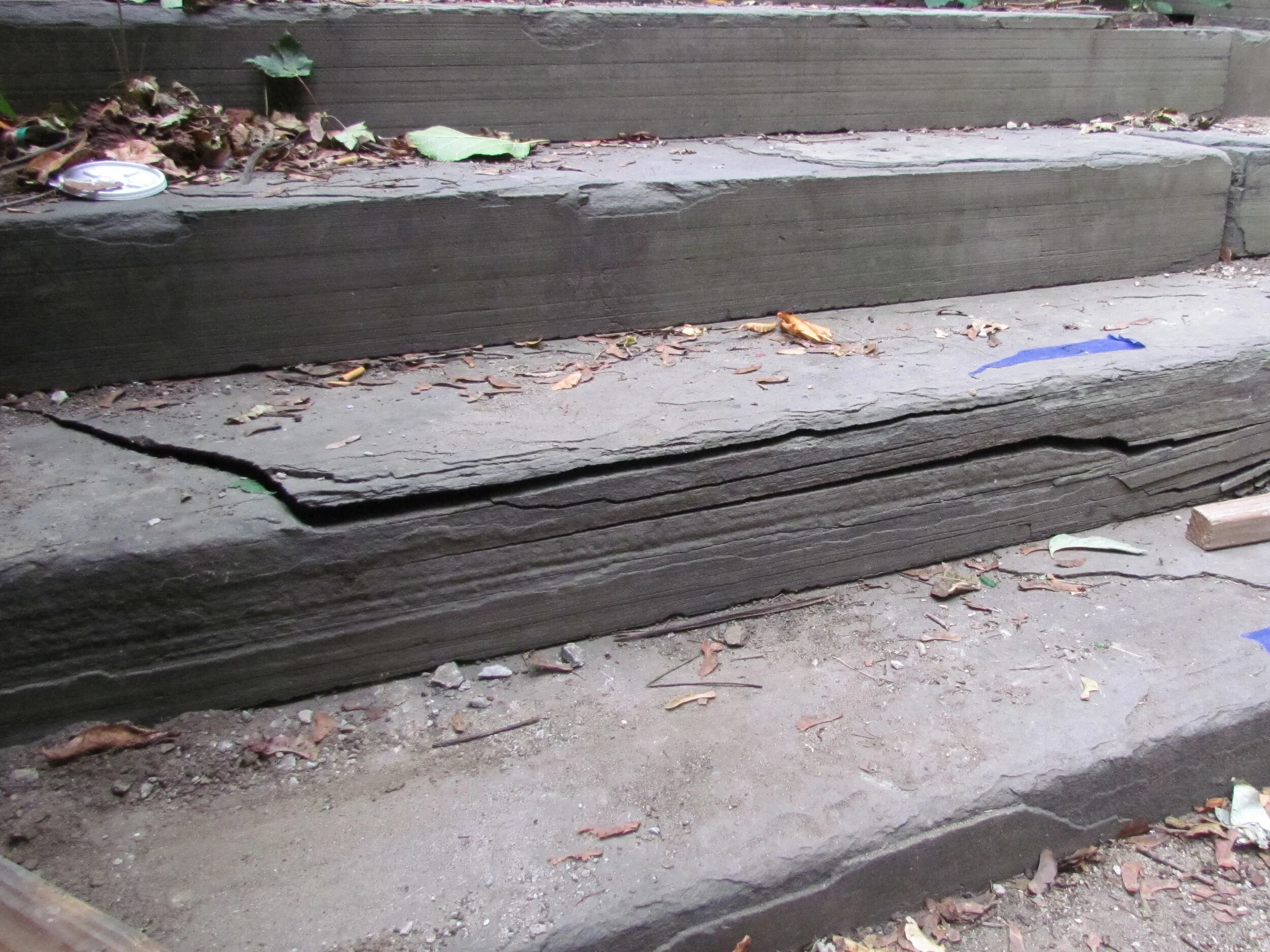Bluestone Blues
Investigating contour scaling through microscopy
Bluestone has been quarried in south central New York and northeast Pennsylvania for over 200 years. It is a hard, dense sandstone that is geologically classified as feldspathic greywacke containing quartz, feldspar, mica and iron. Bluestone has a layered structure, built up of sand-sized grains that were deposited 345 to 370 million years ago as the Appalachian Mountains eroded into an ancient sea that covered the majority of present day New York.
Because of this structure, bluestone can be split into layers with relative ease, making it ideal for many uses, including ashlar masonry and, most commonly, as paving. This layering is also its Achilles heel, as bluestone most frequently deteriorates by delaminating along these natural layers under freeze-thaw and other forms of weathering.
Figure 1: Typical bluestone delamination along its naturally occurring layers.
But bluestone can also be affected by another form of surface loss that does not follow any stone structure: contour scaling. Contour scaling occurs parallel to the exposed surface, independent of the stone’s natural layers. Affected stones appear as if a 3 to 10 mm crust has detached, like peeling an orange. Explanations for this form of weathering are more elusive. It can occur in continental climates as well as tropical zones. Researchers have associated it with many causes, such as thermal expansion, deleterious salts, swelling minerals, and how the stone was tooled, among others.
Figure 2: Bluestone exhibiting contour scaling.
Using microscopic analysis, JBC has identified another potential explanation: formation of calcite crusts. Calcite is a cementing agent within bluestone. When exposed to chemical weathering like acid rain, calcite can dissolve and redeposit on the surface of the stone as it is brought to the exterior through evaporation and capillary action. This results in a crust hardened with more calcite cement and a softer, calcite-depleted core. These two zones within the stone behave vary differently, expanding and contracting at different rates when heated or cooled by the elements or soaked by rain. Repeated wetting and thermal cycling will eventually cause the crust to detach.
Figure 3: Microscopic thin section of scaled bluestone shows a fractured quartz grain resulting from the outer crust detaching from the softer core.
Treatments for contour scaling are limited. However, scientists and conservators working at the Angkor Wat Temple Complex in Cambodia have developed an experimental treatment, using acid to dissolve and remove the calcite within the crust (Wedekind, et al.). Laboratory tests showed a reduction in thermal expansion after soaking in a weak acid solution. The treatment also reopened calcite-filled pores, allowing hydroscopic clay minerals within the stone space to expand when wet. While there is more work to be done - translating laboratory experiments into the built environment and testing the long-term effects of acid treatment - this new research avenue offers a promising solution for stabilizing scaling stone.
REFERENCES:
Wedekind, W., C. Gross, C., van den Kerkhof, A. & Siegesmund, S., “Contour Scaling at the Angkor Temples: Causes, Consequences and Conservation” in Hughes, J., & Howind, T. (Eds.),Science and Art: A Future for Stone: Proceedings of the 13th International Congress on the Deterioration and Conservation of Stone, Volume 1 (Paisley: University of the West of Scotland, 2016).





